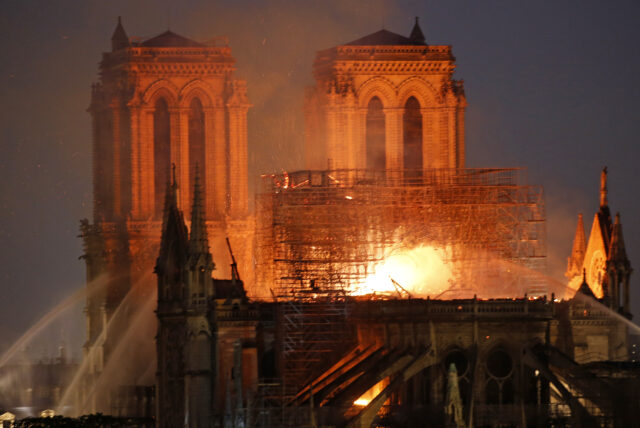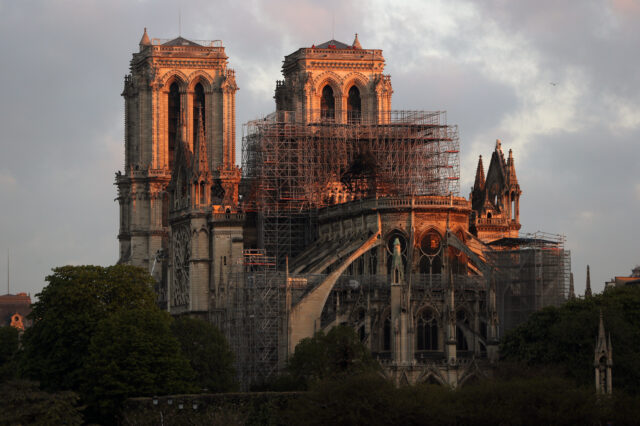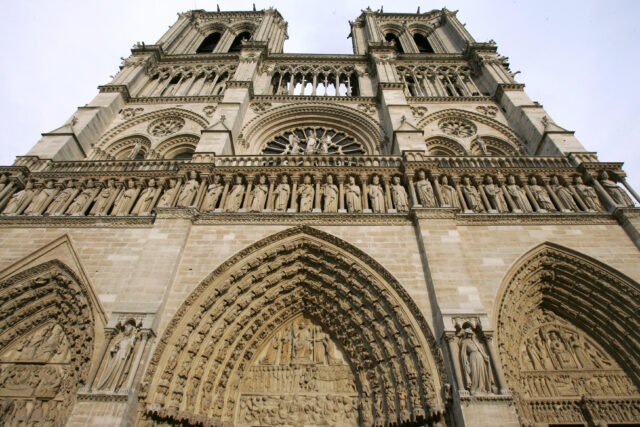A study conducted with materials from the fire-damaged areas of Notre Dame cathedral revealed something astonishing: an architectural technique that was previously believed to have been invented years after the building’s completion. The discovery changes what researchers believed they knew about Gothic-style construction and iron usage in Paris during the 12th century.
The fire provided a unique opportunity

Notre-Dame de Paris is a medieval Catholic cathedral that is a landmark of the city. Construction first began in 1163 and took nearly two centuries to complete, finally wrapping up in 1345. It is one of the finest examples of the French Gothic architectural style in the world. At the time, it was the largest building ever constructed, reaching 104 feet. Ever since its construction, people have flocked to see the beautiful craftsmanship.
On April 15, 2019, disaster struck the long-standing landmark as a fire spread throughout the structure, likely caused by an electrical failure or a lit cigarette. The world watched as for 15 hours, fire consumed the cathedral’s rafters (made from oak), its iconic spire (made of lead), and many other parts of the building. When the fire was finally put out, the cost of restoring Notre Dame to its former glory amounted to a whopping $865 million. The process is still underway and is expected to be completed in 2024.
Researchers discovered a new architectural feature

For all the destruction caused by the fire, it also gave researchers a unique opportunity to get a closer look at the processes used when the cathedral was built. While investigating, they discovered that the builders had used iron staples to reinforce the stone on load-bearing points in its structure. It was long believed that this kind of engineering was first used in Gothic-style architecture after Notre Dame had been completed, but now it seems the cathedral is the site of the earliest known use of iron staples.
“We believed that these great building yards of the 13th century had invented these construction processes using iron armatures, but now it seems that it all occurred at Notre-Dame,” said Maxime L’Héritier, an archaeologist at the Centre National de la Recherche Scientifique and the study’s lead author, in an email. This would have been a major advancement in engineering and technology at the time.
The team of researchers gathered 12 samples of iron from different points of the cathedral and used radiocarbon dating to uncover more information. “Radiocarbon dating reveals that Notre-Dame de Paris is indisputably the first Gothic cathedral where iron was thought of as a real building material to create a new form of architecture. The medieval builders used several thousand of iron staples throughout its construction,” they said in a statement. They discovered that iron staples were used in the earliest stages of building the church.
The find provides insight into the iron market in Paris

The discovery of the iron staples not only changes our understanding of Gothic architecture in the 12th century, but it also provides a better look at iron use and trade in Paris at this time. From the samples taken from the cathedral, the iron staples appear to have been welded together from different iron pieces with varying origins.
Diving deeper into these samples, new conclusions can be made as to how iron was circulated, traded, and even forged in Paris around the time the cathedral was being built. Additionally, it can help establish a database of iron producers that were active in the area.
More from us: These Historic Homes Were Built Out Of Spite
The fire at Notre Dame caused extensive damage, but it also provided invaluable insight into the practices of construction in Paris centuries ago.
